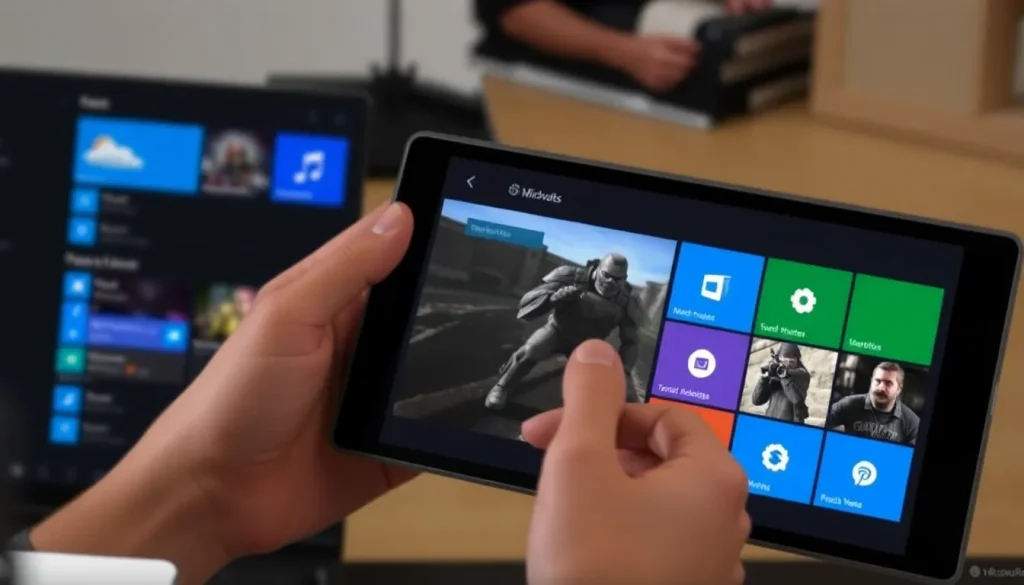Microsoft responds to SteamOS with Windows 11 portable gaming mode

Microsoft has long been a staple in the technology world, primarily due to its Windows operating system, which commands over 70% of the global PC market. However, the company is also known for its Xbox consoles, which, despite their popularity, have not achieved the expected sales in recent generations. In response to emerging competition in the gaming landscape, particularly from handheld devices, Microsoft has embarked on an innovative journey, unveiling new features aimed at enhancing the gaming experience on portable platforms.
Among these innovations is the recently introduced full-screen experience designed for handheld gaming devices, particularly the ASUS ROG Ally. This feature is part of the Windows 11 25H2 update, which optimizes the operating system for gaming while reducing resource consumption. As handheld PCs gain traction, Microsoft's updates are increasingly relevant in the competitive gaming market.
Windows 11 25H2 enhances gaming performance with a full-screen experience
The ASUS ROG Ally represents the growing trend of portable gaming devices that deliver PC-level experiences in a compact form. These handheld PCs have evolved significantly, starting from less powerful models to more robust systems capable of running high-demand games. The introduction of devices like the Steam Deck has been pivotal in raising awareness and interest in handheld gaming.
Despite its sales not matching those of traditional consoles, the Steam Deck has illuminated the potential of handheld gaming and challenged conventional perceptions of gaming operating systems. Its SteamOS, based on Arch Linux, demonstrated that users could achieve better performance metrics than those typically associated with Windows, leading to a reevaluation of operating systems for gaming.
To compete effectively in the handheld gaming space, Microsoft partnered with ASUS to introduce a new, optimized version of Windows that enhances the gaming experience. This development, known as the Xbox Full-Screen Experience, is designed to make Windows 11 more suitable for handheld devices. Users can activate this feature by following specific steps on their ASUS ROG Ally or compatible devices.
- Ensure you have the Windows 11 25H2 update, available through Release Preview for Insiders.
- Navigate to Options > Gaming > Full-Screen Experience.
- Select Xbox and enable the option to activate it at startup.
Once activated, the optimized interface mirrors the functionality of Steam's Big Picture mode, creating a user-friendly environment tailored for gaming. This new setup not only enhances usability but also leads to a significant reduction in RAM usage—between 1 to 2 GB—allowing for smoother gameplay. For instance, games like Red Dead Redemption 2 have shown a notable improvement in frame rates, increasing from 35 to 37 FPS, which is approximately a 5% gain.
Microsoft introduces the beta version of the Gaming Copilot AI
In addition to the full-screen experience, Microsoft has also rolled out the beta version of its Gaming Copilot, an AI-powered assistant designed to enrich the gaming experience. This innovative tool offers players recommendations and in-game assistance, transforming how gamers interact with their titles.
This AI assistant can provide guidance on various gaming scenarios, such as locating an elusive NPC or defeating a challenging enemy, thereby eliminating the need to search for information online. Moreover, Gaming Copilot analyzes users' game libraries to suggest new titles that may pique their interest, enhancing the overall gaming experience.
Gaming Copilot is compatible with Windows PCs and Xbox consoles and supports voice communication, making it easier for players to receive help while immersed in their games. Currently, this feature is accessible on the PC Game Bar for users aged 18 and older, with plans to extend its availability to the Xbox mobile app in October across all regions except China.
Implications of the new features on the gaming landscape
The introduction of features like the full-screen experience and Gaming Copilot signifies Microsoft's commitment to adapting to the evolving demands of gamers. As handheld gaming devices continue to rise in popularity, these enhancements may define the future of portable gaming.
Microsoft's strategic response to competitors like Valve underscores the importance of innovation in maintaining a competitive edge. The shift towards optimizing Windows for portable gaming devices illustrates a broader trend within the gaming industry—an increasing focus on user experience, accessibility, and performance.
Comparative analysis: Windows 11 vs. SteamOS for handheld gaming
As the battle for supremacy in the handheld gaming space heats up, comparing platforms like Windows 11 and SteamOS reveals critical differences that could impact player preferences. Here are some key factors to consider:
| Feature | Windows 11 | SteamOS |
|---|---|---|
| Operating System Base | Windows (Proprietary) | Arch Linux (Open Source) |
| Performance Optimization | Full-Screen Experience, Gaming Copilot | Proton for Windows games |
| Compatibility | Broad compatibility with PC games | Focused on Steam library |
| User Interface | Can adapt to handheld controls | Tailored for Steam Big Picture mode |
| RAM Usage | 1-2 GB less in some games | Variable based on game |
As players weigh their options, the choice between Windows 11 and SteamOS will likely depend on their gaming preferences, hardware, and desired user experience. Microsoft's innovative updates position it as a formidable player in the handheld gaming market, ensuring that gamers have robust options to choose from.
For a more in-depth look at the performance differences, you might find this video analysis insightful:
In conclusion, as Microsoft continues to innovate and adapt its offerings to meet the changing landscape of gaming, players can expect to see continued improvements in both performance and user experience across portable devices.




Leave a Reply